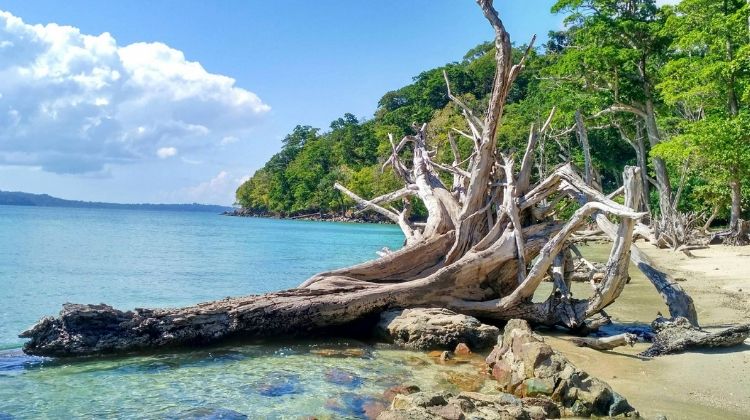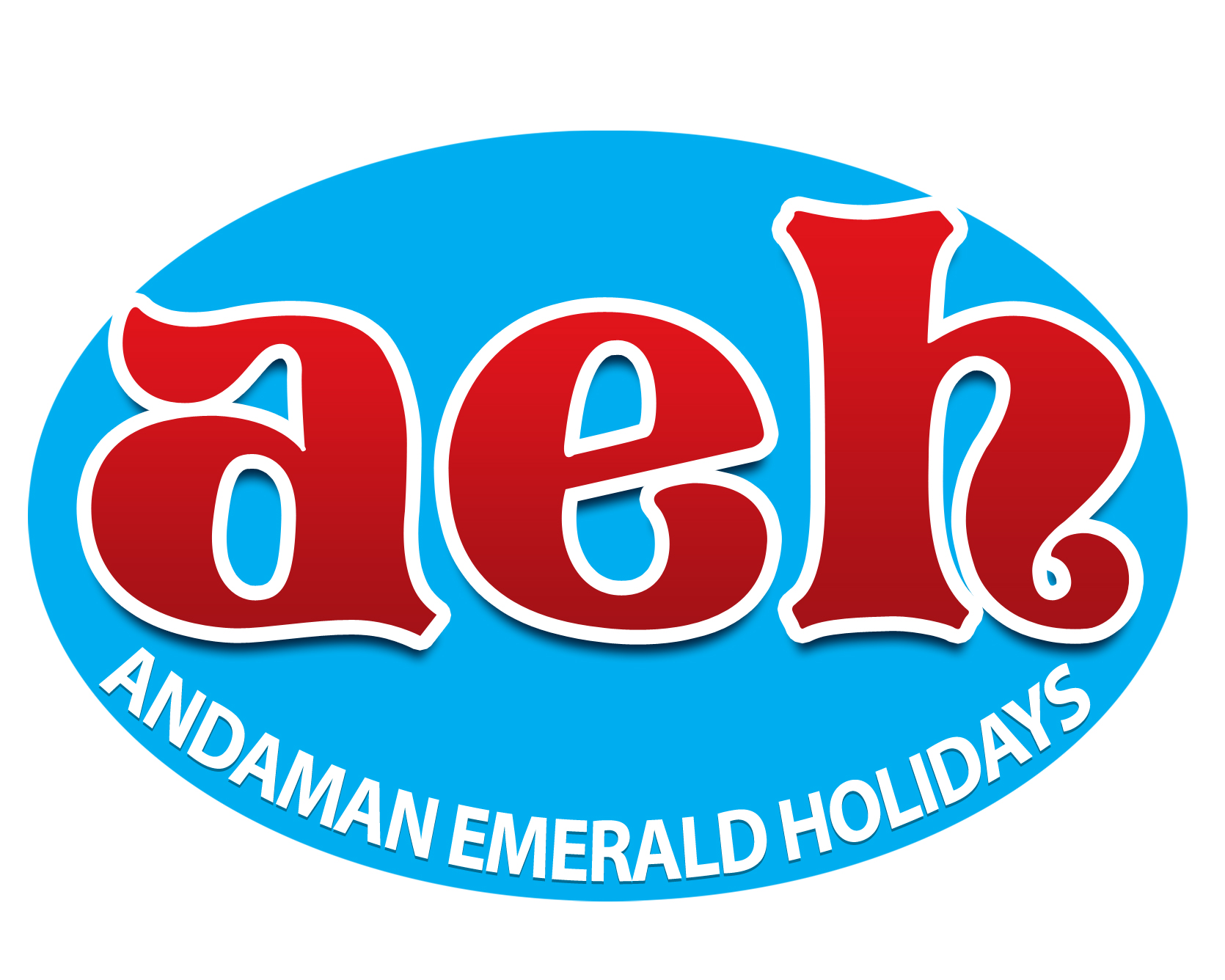Chidiyatapu Biological Park:- Pristine sea beaches, turquoise waters and exciting water sports draw travellers from all parts of the world to Andaman. But these islands have yet more to offer.
The exquisite beauty of the flora and the fauna, inhabiting this archipelago of islands are an example of nature’s fascinating creation.
The established in the year 2001 sprawls over a vast area of about 40 hectares.
Also known as the Bird Island Biological Park, the park was constructed with the sole aim of providing a safe shelter to the birds and the wild animals and preserve varieties of rare plants and trees.
Presently, the park is home to a collection of endangered animals and plants, ranging from the most common ones to the rarest of the rare.
The dense greenery of the park is filled with diverse species of trees such as Padauks, Mahua and Rubber. Several animals such as the barking deer, wild boars and spotted deers roam around the territory, freely.
There is a within the park, enclosed by cages. One can find varieties of reptiles, mostly the rare types here.
For providing information to the general public, display boards have been attached to the respective cages.
If you have a knack for bird-watching, this place will surely not let you down.
Given the calm and optimal ambience, several kinds of birds thrive inside the park. Moreover, this park is visited by migratory birds during the seasons.
The Chidiya Tapu Biological Park (Bird Island Biological Park) came into existence in 2001 with the aim to conserve and study endemic and endangered species of animals found in the Andaman and Nicobar islands.
Since then the park has been a center for biodiversity and conservation where one can catch a glimpse of the rich fauna of the islands.
The plan for the park has been meticulously laid out to span over 20 years and three phases, of which only one phase is currently open to the public.
A green and dense jungle-like environment cleverly recreates the natural habitat of the animals here.
Sprawled over 40 hectares, the park is covered with a variety of plants, right from the majestic Mahuas to the exquisite Padauks. While walking through this jungle, one would be able to catch a glimpse of a variety of birds flying around freely.
Other than birds you could spot wild pigs as well as barking deer and spotted deer.
Those fascinated with reptiles would enjoy the saltwater crocodile spotting.
The future phases will see the park housing an aquarium, an insectarium, a reptile house, a butterfly house, and a walk-in Aviary.
It sure is something to look forward to. The Park now does not have much to see.
It is connected by scenic road and the best way to get here is by taking a private cab. You can also hire 2-wheelers for the day.
Chidiyatapu is also known for the Munda Pahad Beach (spectacular sunset awaits) and its bird-watching tours.
Ideally one would club a visit to the biological park with a few other attractions nearby.
How to Reach
The territory is having adequate space and regular surroundings to give the accompanying :-
- Required adequately huge space for walled in areas and different offices.
- Water repositories, streets, ways, covers, open recreational place and different frameworks.
- The Biological Park is all around associated with Port Blair, having a decent street connection and transport office.
- There is a little town at Chidiyatapu and as the entire region is having Reserve Forest with no other formative exercises in the environment, subsequently it will be conceivable to give a contamination free condition to the Biological Park
About Chidiyatapu Biological Park
The Chidiya Tapu Biological Park (Bird Island Biological Park) appeared in 2001 with the expect to ration and concentrate endemic and imperiled types of creatures found in the Andaman and Nicobar islands.
From that point forward the recreation center has been an inside for biodiversity and preservation where one can get a look at the rich fauna of the islands.
The arrangement for the recreation center has been fastidiously laid out to traverse more than 20 years and three stages, of which just a single stage is presently open to open.
A green and thick wilderness like condition cunningly reproduces the characteristic territory of the creatures here. Sprawled more than 40 hectares, the recreation center is secured with an assortment of plant, ideal from the glorious Mahuas to the flawless Padauks.
While strolling through this wilderness, one would have the capacity to get a look at an assortment of flying creatures flying around unreservedly.
Other than winged creatures you could spot wild pigs and additionally woofing deer and spotted deer. Those interested with reptiles would appreciate the saltwater crocodile spotting.
The future stages will see the recreation center lodging an aquarium, an insectarium, a reptile house, butterfly house and a stroll in Aviary.
It beyond any doubt is a remark forward to. The Park now does not have much to see.
A smaller than normal zoo was built up at Port Blair in 1967 with the target of displaying remarkable endemic creature species found in these islands, in confined condition principally for recreational reason.
The idea of a cutting edge zoo as characterized by the Central Zoo Authority may be “to house and show the creatures in such a way, to the point that the targets of natural life protection including making of compassion for wild creatures are accomplished”.
The present Zoo at Port Blair can’t meet completely the above expressed prerequisites of a cutting edge zoo in view of an extremely constrained space (just 4 ha) accessible and furthermore because of a bothered encompassing.
There is no degree for its augmentation and modernization. In introduce day setting principle goal of working any Zoo or Zoological Park is gone for protection of unnamed life by giving in natural surroundings beyond what many would consider possible to the hostage creatures.
The show of creatures is to be done in such a way as to give significant data to guests about the significance of natural life, its living space and part in the eco-framework.
The zoo ought not be only for entertainment of guests but rather it ought to likewise be a wellspring of teaching individuals and advancing examination on creature conduct, rearing and populace progression. Keeping these objectives in view, following destinations are set for the Chidiyatapu Biological Park.
Natural life instruction and translation with the end goal of conveying preservation esteems to the meeting open, for understanding the exceptional faunal abundance of these islands and its part in the islands biological community.
Hostage rearing of uncommon, jeopardized and endemic species for ex-situ preservation Logical examination and research on creature conduct, sustenance, propagation, sickness and so on.
The Chidiyatapu Biological Park remains open on all days of the week except Mondays from 10.00 a.m. to 05.30 p.m.





Comment (0)